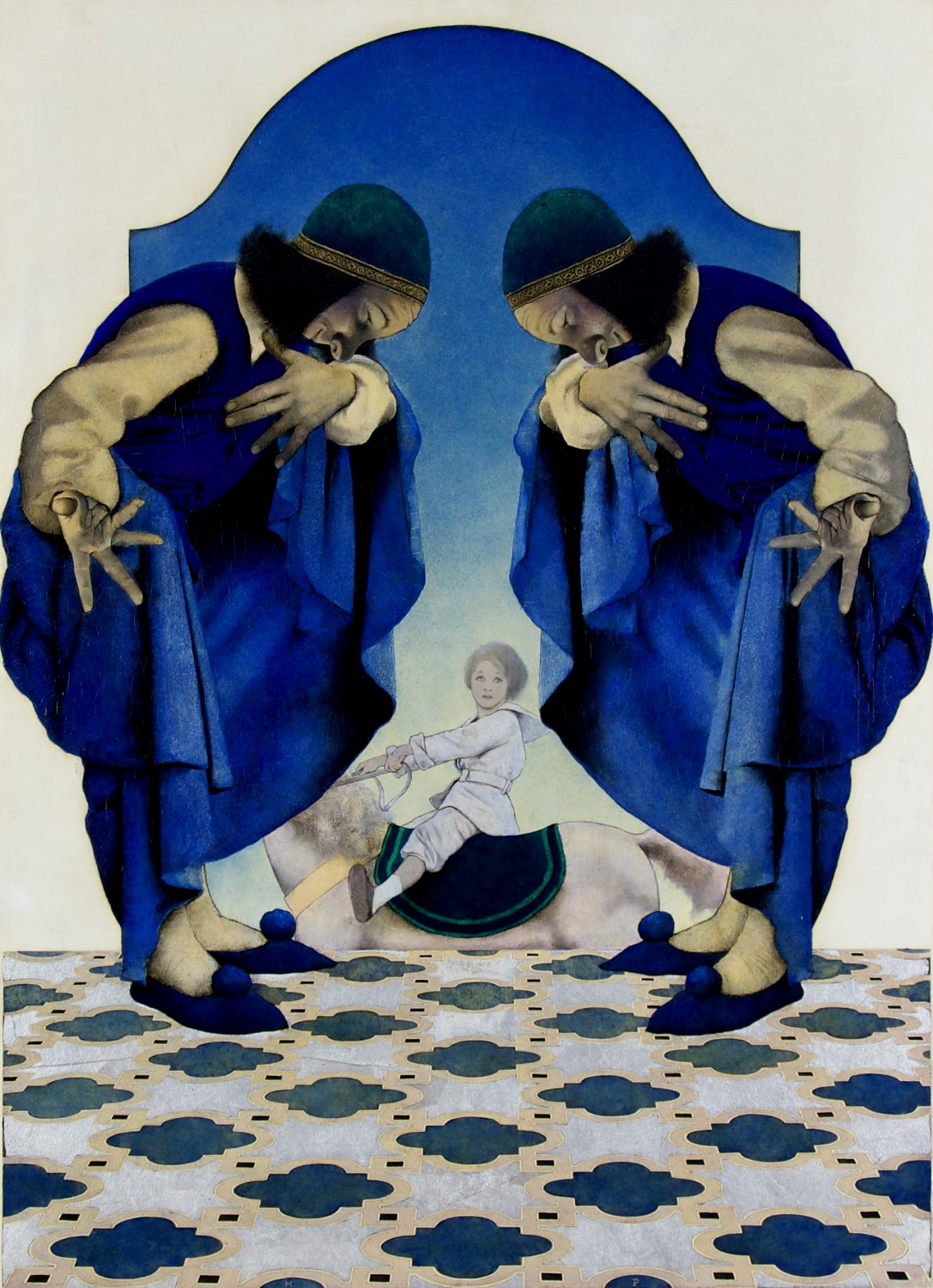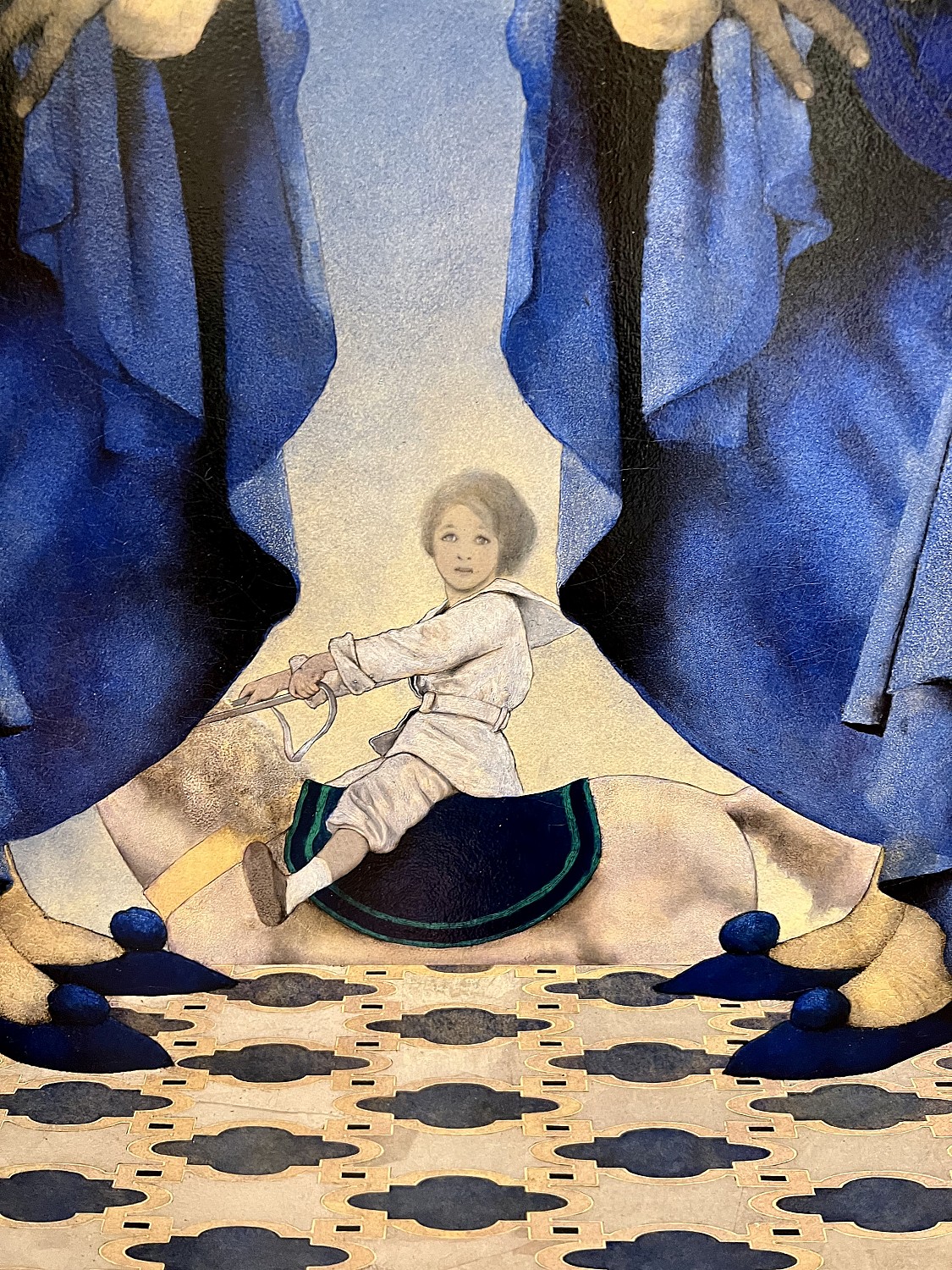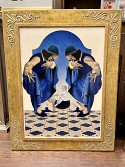"The Fly-Away Horse" Lot no. 4736
By Maxfield Parrish (1870-1966)
1904
28" x 20.5"
Oil on paper laid down to board
Signed Initials
REQUEST PRICE
PURCHASE REQUEST
Signed with the initials M.P. (lower center); signed Maxfield Parrish, titled, dated April of 1904., and inscribed (on the reverse) 28 by 20½ in. 71.1 by 52.1 cm.
Executed in Windsor, Vermont in April 1904. “Oh, a wonderful horse is the Fly-Away Horse— Perhaps you have seen him before; Perhaps while you slept, his shadow has swept Through the moonlight that floats on the floor” - Eugene Field, “Fly-Away-Horse” from Poems of Childhood, New York, 1904. Illustration and children’s literature entered their Golden Ages hand in hand. At the turn of the twentieth century, literacy rates among American youth soared along with works like The Tale of Peter Rabbit, The Jungle Book, and The Wonderful Wizard of Oz. Simultaneously, advances in photoengraving meant publishers could hire illustrators to create lavish, full color images for their books. The Fly-Away Horse is a shining example of his practice. One of Maxfield Parrish’s original oil illustrations for Eugene Field’s Poems of Childhood (1904), the work features deep purple-blues and crisp linework, juxtaposing fantastical color with realistic detail. In a doubled, expressive gesture, twin figures beckon a child into a dream, suggesting the realm of the beholder is a world of possibility. Parrish’s whimsical illustrations captured the imagination of a generation. As a child, art critic Laurence Cutler “thought that [Parrish’s] paintings were of real places… their images were too realistic not to be believed. Their stark beauty and superb execution denied us any ability to question their existence (Exh. Cat., “Maxfield Parrish: Romance and Fantasy,” The Great American Illustrators, New York, 1993, p. 117). Although Parrish’s fantasy illustrations are similar in context to that of classmate Jessie Wilcox Smith (fig. 1) and his Continental contemporary Edmund Dulac (fig. 2), Parrish was unique in his ability to seamlessly blend fantasy and reality. Left: Fig. 1. Jessie Willcox Smith, The Little Lame Prince, c. 1923, mixed media on illustration board, 19 ¼ by 17 ½ in. Image courtesy of the Illustrated Gallery Right: Fig. 2. Edmund Dulac, As he descended…, from Stories from the Arabian nights / retold by Laurence Housman, London, 1907, National Library of New Zealand Digital Collections, Alexander Turnbull Library. © 2023 Artists Rights Society (ARS), New York / DACS, London All three artists were talented anatomists with keen imaginations and attention to detail. However, as Cutler notes, Parrish’s works were exceptionally immersive due to his unusual painting process, which was “photographic, mechanical and above all technically accurate” (ibid.). Inspired by Dutch and Flemish old masters, the artist alternated thin glazes of pure pigment and varnish to give his color heightened luminosity, yielding the smooth, vivid ultramarines of Fly-Away Horse. Parrish considered himself a “mechanic who painted,” building a projection device to scale and arrange sketches and photographs for his compositions (Alma Gilbert, The Mechanic Who Loved to Paint: The Other Side of Maxfield Parrish, California, 1995). The use of projection is evident in the figures’ precise mirroring and in the work’s multiple perspectives. Altogether, these techniques lent a verisimilitude to even the most fantastic images. “Never before had fantasy had so credible, so awesome a look” - Judy L. Larson, 1980
Literature: Paul W. Skeeters, Maxfield Parrish: The Early Years, 1893-1930, Secaucus, New Jersey 1973, pp. 178-79, illustrated Alma Gilbert, Maxfield Parrish: The Masterworks, Berkeley, California 1992, fig. 2.14, pp. 33 and 35, illustrated Laurence S. Cutler and Judy Goffman, Maxfield Parrish, London 1993, p. 33, illustrated Laurence S. Cutler and Judy Goffman, Maxfield Parrish: A Retrospective, San Francisco 1995, p. 64, illustrated
Exhibitions: Boston, Vose Galleries, An Exhibition of Original Paintings and Drawings by Maxfield Parrish, 1870-1966, 1977, no. 13 San Mateo, California, La Galeria, Maxfield Parrish, 1978, no. 6, illustrated Tokyo, Isetan Museum of Art; Osaka, Japan, The Museum of Art, Kintetsu; Tamanashi, Japan, Yamanashi Prefectural Museum of Art (and traveling), Maxfield Parrish: A Retrospective, 1995, no. 38, pp. 91. 164 and 180, illustrated
See all original artwork by Maxfield Parrish
ABOUT THE ARTIST
To behold the work of American illustrator Maxfield Parrish (1870–1966) is to enter into a fantasy world of ethereal beauty. Whether a book illustration, magazine cover, painting or mural commission, his flawlessly rendered subjects and fairy-tale settings are infused with a sense of mythical beauty unmatched by any artist in his wake
A Unique Approach
The magic and sublime spirit of Parrish’s work is the result of his unique approach to painting. He began with a white base which served to illuminate the image from the first layer up through to the last. Repeated layering of varnish on the surface of the pigment heightened the vibrancy of his colors, yielding shades like the famous "Parrish blue," a rich cobalt that is now indelibly associated with the artist. This singular technique allowed Parrish to convey textures and patterns with the intense detail and saturation of color that became trademarks of his best works.
This May, a museum-quality collection of 11 works by Maxfield Parrish pay tribute to the superior talent and unique vision of this seminal artist. A leading highlight of the collection is Sing a Song of Six Pence, measuring over 13 feet long and painted as a mural for the hotel bar of the Sherman House in Chicago, Illinois. Parrish began his career painting a mural of Old King Cole for the University of Pennsylvania in 1894, and was immediately recognized for his ability to render exquisite detail on a monumental scale. He often projected photographic images and then painted directly on the surface of his murals, which may account for the veracity of the features displayed in this work.







